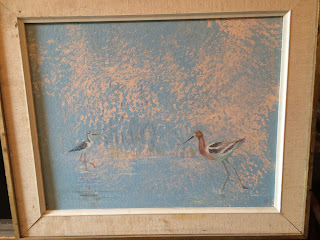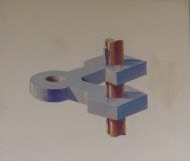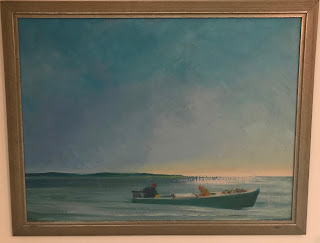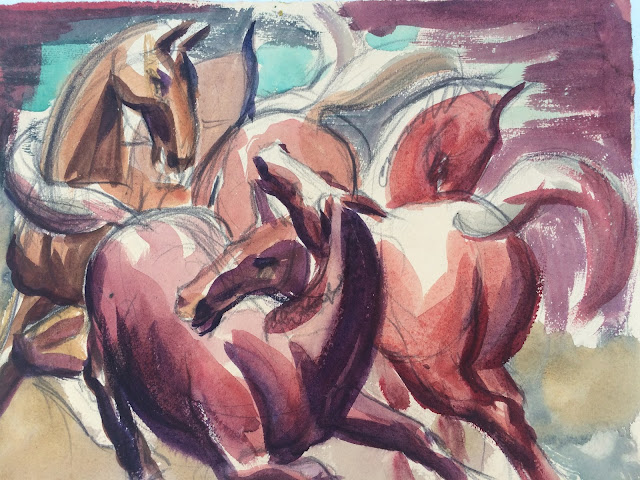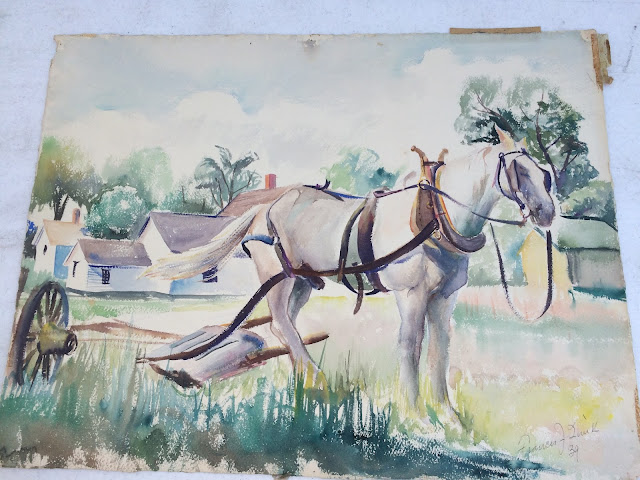Francis Quirk loved painting maritime subjects and he had excellent technique. A painting coming up for auction today in New York embodies these statements. You can bid on it here. The artwork features the bow end of some type of sailing schooner. The outline of the prow and rusting anchors are carefully depicted with numerous ropes,chains, and stays. This artwork was not dashed off in a few minutes. There is great attention to detail.
 |
| Maritime Watercolor by Francis J. Quirk |
Watercolor is a difficult medium to work with as one needs to think about where the white space is at the outset. Notice the ripples in the water.
 |
| Close up of Stevedores in Maritime Watercolor by Francis J. Quirk |
The close up photo of the stevedores on the dock shows a tremendous amount of craftsmanship from the detail in the rope to the reflection of rigging in the window.
 |
| Signature on Maritime Watercolor by Francis J. Quirk |
This work is dated 1953 when Quirk would have been 36 years old. At this time he would be early in his tenure at Lehigh University.
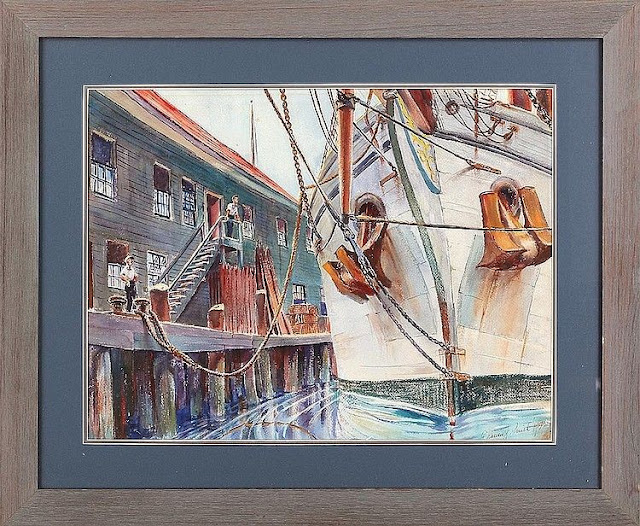 |
| Maritime Watercolor by Francis J. Quirk as Framed |










